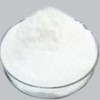Hydroxypropyl Methylcellulose or HPMC or Hypromellose Manufacturer Exporter BP Ph Eur USP FCC Food Grade Manufacturer Exporter
Crystal Clear Products is a manufacturer exporter company manufacturing several chemicals including Hydroxypropyl Methylcellulose or HPMC or Hypromellose and IP BP Ph Eur USP NF JP ACS AR Analytical Reagent FCC Food Grade, Pharmaceutical Chemicals at best prices. The group has offices and factories in India USA and UAE and toll manufacturers in China and sells to almost every country in the world.
The manufacturing facilities of our partner manufacturers have one or more of FDA-cGMP-GLP certification, ISO-9001 certification, Halal and/or Kosher certification, REACH pre-registration ISO-22000 HACCP. We also allow third party inspection of products offered. We can offer small quantities from laboratory and trial packs to large shipments of container loads of material.
Hazard Statements:
Not a hazardous substance or mixture according to Regulation (EC) No. 1272/2008.
This substance is not classified as dangerous according to Directive 67/548/EEC.
Not considered hazardous by the OSHA Hazard Communication Standard (29 CFR 1910.1200)
Signal Word: None
Transport Information
DOT USA, TDG Canada & ADR/RID Europe: Not dangerous goods.
IMO/IMDG: Not dangerous goods.
IATA/ICAO: Not dangerous goods.
You may please visit:
Hydroxypropyl Methylcellulose or HPMC or Hypromellose SDS of Manufacturers

CAS Number 9004-65-3 Hydroxypropyl Methylcellulose or HPMC or Hypromellose, EINECS: 618-389-6
Specifications of Hypromellose USP Grade:
Cellulose, 2-hydroxypropyl methyl ether
Cellulose hydroxypropyl methyl ether --- CAS 9004-65-3
DEFINITION
Hypromellose is a methyl and hydroxypropyl mixed ether of cellulose. It contains, calculated on the dried basis, methoxy (– OCH3 : 31.03) and hydroxypropoxy (– OC3H6OH: 75.09) groups conforming to the limits for the types of Hypromellose (hydroxypropyl methylcellulose) set forth in the table below.
Substitution Type 1828; Methoxy% 16.5 to 20; Hydroxypropoxy% 23 to 32
Substitution Type 2208; Methoxy% 19.0 to 24; Hydroxypropoxy% 4 to 12
Substitution Type 2906; Methoxy% 27.0 to 30; Hydroxypropoxy% 4 to 7.5
Substitution Type 2910; Methoxy% 28.0 to 30; Hydroxypropoxy% 7 to 12
IDENTIFICATION
A.
Sample: 1 g
Analysis: Gently add the Sample to the top of 100 mL of water in a beaker, and allow to disperse over the surface, tapping the top of the container to ensure an even dispersion of the substance. Allow the beaker to stand for 1 - 2 min.
Acceptance criteria: The powdered material aggregates on the surface.
B.
Sample: 1 g
Analysis: Add the Sample to 100 mL of boiling water, and stir the mixture using a magnetic stirrer with a bar 25-mm long.
Acceptance criteria: A slurry is formed, but the powdered material does not dissolve. Cool the slurry to 10C and stir using a magnetic stirrer: the resulting liquid is a clear or slightly turbid solution with thickness dependent on the viscosity grade.
C.
Solution A: Sulfuric acid and water (9 in 10). [Note— Carefully add sulfuric acid to water. ]
Sample solution: 0.1 mL of the solution prepared for Identification test B
Analysis: To the Sample solution add 9 mL of Solution A, and shake. Heat in a water bath for exactly 3 min, immediately cool in an ice bath, and add carefully 0.6 mL of ninhydrin. Shake and allow to stand at 25C.
Acceptance criteria: A red color develops at first that changes to purple within 100 min.
D.
Sample solution: 2–3 mL of the solution prepared for Identification test B
Analysis: Pour the Sample solution onto a glass slide as a thin film, and allow the water to evaporate.
Acceptance criteria: A coherent, clear film forms on the glass slide.
E.
Sample solution: 50 mL of the solution prepared in Identification test B
Analysis: Add the Sample solution to exactly 50 mL of water in a beaker. Insert a thermometer into the solution. Stir the solution on a magnetic stirrer/hot plate and begin heating at a rate of 2C - 5C/min. Determine the temperature at which a turbidity increase begins to occur, and designate this temperature as the flocculation temperature.
Acceptance criteria: The flocculation temperature is higher than 50C.
Residue on Ignition:
Sample: 1.0 g
Acceptance criteria: NMT 1.5%
pH:
Sample: Use the solution prepared in the tests for Viscosity.
Analysis: Read the indicated pH value after the probe has been immersed for 5 ± 0.5 min.
Acceptance criteria: 5.0 - 8.0
Loss on Drying:
Sample: 1.0 g
Analysis: Dry the Sample at 105C for 1 h.
Acceptance criteria: NMT 5.0%
Viscosity: To pass the test.
Acceptance criteria: 75% 140% of the viscosity stated on the label
Specifications of Hypromellose BP Ph Eur Grade:
CAS 9004-65-3
DEFINITION
Hydroxypropylmethylcellulose. Cellulose, 2-hydroxypropylmethyl ether. Partly O-methylated and O-(2-hydroxypropylated) cellulose.
Content: Methoxy (-OCH3; Mr 31.03) and hydroxypropoxy (-OC3H6OH; Mr 75.09) groups (dried substance) conforming to the types of hypromellose set forth in the accompanying table.
CHARACTERS
Appearance: White, yellowish-white or greyish-white powder or granules, hygroscopic after drying.
Solubility: Practically insoluble in hot water, in acetone, in anhydrous ethanol and in toluene. It dissolves in cold water giving a colloidal solution.
IDENTIFICATION
A. Evenly distribute 1.0 g onto the surface of 100 mL of water in a beaker, tapping the top of the beaker gently, if necessary, to ensure a uniform layer on the surface. Allow to stand for 1-2 min: the powdered material aggregates on the surface.
B. Evenly distribute 1.0 g into 100 mL of boiling water, and stir the mixture using a magnetic stirrer with a bar 25 mm long: a slurry is formed and the particles do not dissolve. Allow the slurry to cool to 10C and stir using a magnetic stirrer: a clear or slightly turbid solution occurs with its thickness dependent on the viscosity grade.
C. To 0.1 mL of the solution obtained in identification test B add 9 mL of a 90 per cent V/V solution of sulfuric acid, shake, heat on a water-bath for exactly 3 min, immediately cool in an ice-bath, carefully add 0.6 mL of a 20 g/L solution of ninhydrin, shake and allow to stand at 25C: a red colour develops at first and changes to purple within 100 min.
D. Place 2-3 mL of the solution obtained in identification test B onto a glass slide as a thin film and allow the water to evaporate: a coherent, clear film forms on the glass slide.
E. Add 50.0 mL of the solution obtained in identification test B to 50.0 mL of water in a beaker. Insert a thermometer into the solution. Stir the solution on a magnetic stirrer/hot plate and begin heating, increasing the temperature at a rate of 2-5C per minute. Determine the temperature at which a turbidity increase begins to occur and designate the temperature as the flocculation temperature: the flocculation temperature is higher than 50C.
TESTS
Appearance of solution: The solution is not more opalescent than reference suspension III and not more intensely coloured than reference solution.
While stirring, introduce a quantity of the substance to be examined equivalent to 1.0 g of the dried substance into 50 g of carbon dioxide-free water heated to 90C. Allow to cool, adjust the mass of the solution to 100 g with carbon dioxide-free water and stir until dissolution is complete.
pH: 5.0 to 8.0 for the solution prepared as described under Viscosity. Read the indicated pH value after the probe has been immersed for 5 ± 0.5 min.
Viscosity: 80 per cent to 120 per cent of the nominal value for samples with a viscosity less than 600 mPas; 75 per cent to 140 per cent of the nominal value for samples with a viscosity of 600 mPas or higher.
Loss on drying: Maximum 5.0 per cent, determined on 1.000 g by drying in an oven at 105C for 1 h.
Sulfated ash: Maximum 1.5 per cent, determined on 1.0 g.
Specifications of Hydroxypropyl Methylcellulose FCC Food Grade:
Propylene Glycol Ether of Methylcellulose; Modified Cellulose, HPMC
INS: 464 CAS 9004-65-3
DESCRIPTION
Hydroxypropyl Methylcellulose occurs as a white to off-white, fibrous powder or as granules. It is the propylene glycol ether of methylcellulose in which both the hydroxypropyl and the methyl groups are attached to the anhydroglucose rings of cellulose by ether linkages. Several product types are available that are defined by varying combinations of methoxyl and hydroxypropoxyl content. It is soluble in water and in certain organic solvent systems. Aqueous solutions are surface active, form films upon drying, and undergo a reversible transformation from sol to gel upon heating and cooling, respectively.
Function: Thickening agent; stabilizer; emulsifier.
REQUIREMENTS
Identification:
A. Add 1 g of sample to 100 mL of water. It swells and disperses to form a clear to opalescent, mucilaginous solution, depending on the intrinsic viscosity, which is stable in the presence of most electrolytes.
B. Add 1 g of sample to 100 mL of boiling water, and stir the mixture. A slurry forms that when cooled to 20C, dissolves to form a clear or opalescent, mucilaginous solution.
C. Pour a few milliliters of the solution prepared for Identification Test B onto a glass plate and allow the water to evaporate. A thin, self-sustaining film forms.
Assay for Hydroxypropoxyl Groups: Between a minimum of 3.0% and a maximum of 12.0% of hydroxypropoxyl groups (-OCH2CHOHCH3), within the range claimed by the vendor for any product type.
Assay for Methoxyl Groups: Between a minimum of 19.0% and a maximum of 30.0% of methoxyl groups (-OCH3), within the range claimed by the vendor for any product type.
Lead: Not more than 3 mg/kg.
Loss on Drying: Not more than 5.0%.
Residue on Ignition: Not more than 1.5% for products with viscosities of 50 centipoises or above; not more than 3.0% for products with viscosities below 50 centipoises.
Viscosity: The viscosity of an aqueous solution containing 2 g of sample per 100 g of solution is not less than 80.0% and not more than 120.0% of that stated on the label for viscosity types of 100 centipoises or less, and not less than 75.0% and not more than 140.0% of that stated on the label for viscosity types higher than 100 centipoises.
Contact for Monograph, Uses, Matnfacturing Process, etc of Hydroxypropyl Methylcellulose or HPMC or Hypromellose and JP IP BP Ph Eur USP NF FCC Food AR ACS Reagent Grade Manufacturer Supplier Exporter
MANUFACTURER EXPORTER
MUMBAI 400009, INDIA. TEL: (OFFICE) 91-9322665100
info@manufacturerexporter.com
Copyright and Usual Disclaimer is Applicable
Last updated
11/19/2022
Manufacturer Suppliers Exporters at Wholesale Prices from India USA and around the Globe
Hyaluronic Acid -- Iron Picolinate or Ferrous Picolinate -- Hydrogenated Soybean Oil -- Hydrogenated Palm Oil -- Hydroxypropyl Chitosan -- Hypromellose -- Iron Sulfide --






